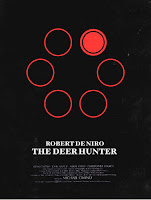 |
| “Okay, Russell just don’t sing anymore.” |
“The Counselor,” directed by Scott and penned by Cormac McCarthy, comes out today. Reviews have been mixed so far, but I still look forward to seeing it. Basically, I will see any movie that has a third act filled with monologues as well as Javier Bardem dressed like Hunter S. Thompson.
After the jump, check out my five favorite Ridley Scott movies:
5. Gladiator
So far, this is the only film by Ridley Scott to win Best Picture. Unfortunately, it did not come with a Best Director prize as well. People like to rip on “Gladiator” nowadays. In fact, Roger Ebert called it the worst Best Picture winner ever. I will not join the hate party. “Gladiator” is a perfectly good sword-and-sandals epic, filled with as many terrific battle scenes as there are historical inaccuracies. This is sincerely the best acting work Russell Crowe has done, “Les Mis” singing notwithstanding. “Gladiator” is something of a minor classic now. Yelling “are you not entertained?” at humans and animals is still fun.
4. American Gangster
“American Gangster” doesn’t get the credit it deserves. It’s a great portrait of corruption, racial identity, and 1970s America. Scott gets some nearly flawless acting out of the likes of Denzel Washington and Josh Brolin, who are both than I ever could have imagined at playing villains. Play close attention to the ending: its a really memorable one.
3. Thelma & Louise
Ridley Scott is known more for handling epics. While there are many car chases in “Thelma & Louise,” you’d be surprised at what a human film it is. It’s a fine slice of Americana from an English director, with great performances from Susan Sarandon and Geena Davis. Then comes the end, where you can’t help but feel both dread and exhilaration: no matter what, you just know the two of them can’t make it out in one piece. Never has doom felt so entertaining.
2. Blade Runner
It was a long, hard path for “Blade Runner” to raise to prominence, but it has truly earned its title as a cult masterpiece. Nearly every modern futuristic film can point to “Blade Runner” as a source of influence, whether or not those films based on Philip K. Dick novels as well. “Blade Runner” is a visual tour-de-force, Atari billboards notwithstanding. It is also Ridley Scott’s most thoughtful and philosophical film; Rutger Hauer’s final monologue (which was completely improvised) will haunt you for days. It only took about three different cuts (the original version is almost unwatchable) for “Blade Runner” to reach perfection.
1. Alien
“Alien” put Ridley Scott on the map, and its still his best film to date. Being alone in space is scary enough (a certain other film this year played off this idea), but then add in an alien that grows at an exponential rate. It hasn’t lost its touch after all of these years; “Alien” still has the power to scare the living crap out of me. Everything from Sigourney Weaver’s performance to the alien itself are now the stuff of cinematic legend. Plus, it spurned one of the greatest sequels of all time (“Aliens”). Without “Alien,” how would we know what it looks like when a baby alien bursts out of a man’s stomach? It’s gross, and adorable!

